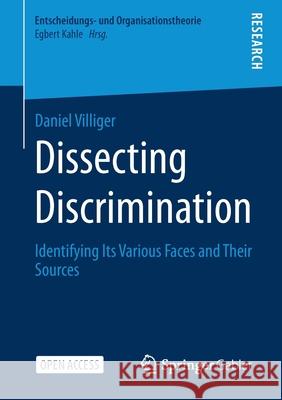Dissecting Discrimination: Identifying Its Various Faces and Their Sources » książka
topmenu
Dissecting Discrimination: Identifying Its Various Faces and Their Sources
ISBN-13: 9783658345686 / Angielski / Miękka / 2021 / 224 str.
Dissecting Discrimination: Identifying Its Various Faces and Their Sources
ISBN-13: 9783658345686 / Angielski / Miękka / 2021 / 224 str.
cena 363,12
(netto: 345,83 VAT: 5%)
Najniższa cena z 30 dni: 346,96
(netto: 345,83 VAT: 5%)
Najniższa cena z 30 dni: 346,96
Termin realizacji zamówienia:
ok. 22 dni roboczych
Bez gwarancji dostawy przed świętami
ok. 22 dni roboczych
Bez gwarancji dostawy przed świętami
Darmowa dostawa!
Kategorie BISAC:
Wydawca:
Springer Gabler
Seria wydawnicza:
Język:
Angielski
ISBN-13:
9783658345686
Rok wydania:
2021
Wydanie:
2021
Numer serii:
000440450
Ilość stron:
224
Waga:
0.30 kg
Wymiary:
21.01 x 14.81 x 1.32
Oprawa:
Miękka
Wolumenów:
01
Dodatkowe informacje:
Wydanie ilustrowane











